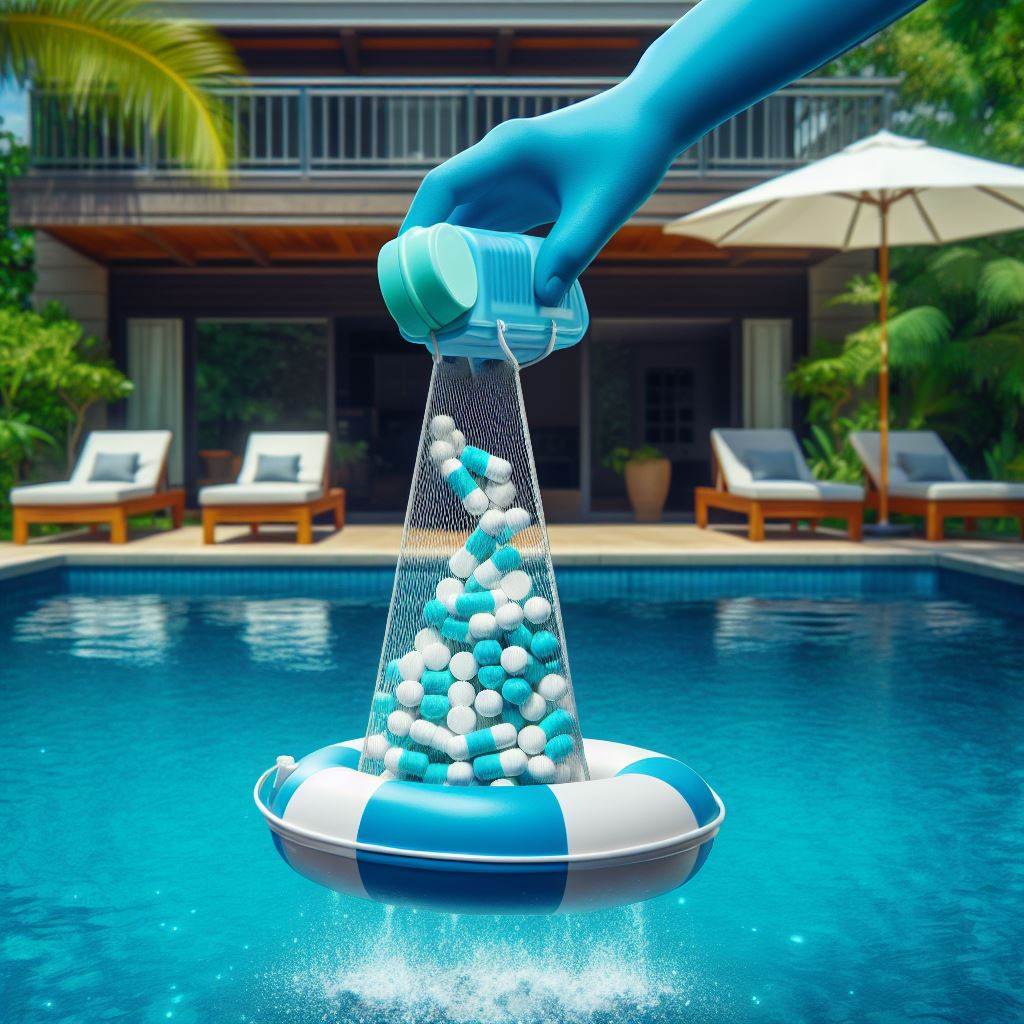In the realm of water management and treatment, ensuring optimal water quality stands as a paramount challenge, especially when confronted with a myriad of issues ranging from biological contamination to chemical imbalances. Chlorine floater, as a versatile and potent disinfectant, plays a pivotal role in addressing these concerns. This article delves into the multifaceted strategies that chlorine floater employs to tackle diverse water quality issues, emphasizing its proactive and tailored approaches.

I. Addressing Biological Contaminants: A Sterilizing Force
Chlorine floater, with its robust oxidizing properties, acts as a formidable barrier against microorganisms such as bacteria, viruses, and fungi. When dissolved in water, it releases chlorine gas and nascent oxygen, both of which possess potent biocidal capabilities.
1. Direct Elimination:
Chlorine floater directly attacks the cell walls of microorganisms, disrupting their vital functions and ultimately leading to their demise. This ensures the water is sanitized, safeguarding against potential health hazards.
2. Preventive Measure:
Regular dosing of pool chlorine floater in water sources acts as a preventive measure, inhibiting the growth and spread of harmful pathogens, maintaining a clean and hygienic environment.

II. Tackling Chemical Imbalances: Balancing Act with Care
Water quality issues often stem from chemical imbalances, with excessive levels of organic matter or contaminants posing significant threats. Chlorine floater, when used judiciously, can help restore balance.
1. Oxidative Breakdown:
Chlorine floater’s oxidative power effectively breaks down organic compounds, reducing their concentration in the water. This not only improves water clarity but also minimizes the risk of harmful byproducts forming.
2. Moderate Dosage:
Crucially, the use of chlorine floater must be carefully controlled to avoid excessive dosing, which could lead to the formation of toxic chlorinated compounds. Regular monitoring and adjustment of chlorine levels ensure a delicate balance between disinfection and safety.
III. Specific Water Quality Scenarios: Tailored Solutions
Different water bodies and applications require tailored strategies for effective chlorine floater utilization.
1. Aquaculture:
In aquaculture, chlorine floater is used to disinfect water prior to stocking, minimizing disease outbreaks. However, strict adherence to recommended concentrations is crucial to avoid harming aquatic life. Regular water quality monitoring and prompt adjustments to chlorine levels ensure a healthy environment for fish and other aquatic organisms.
2. Swimming Pools:
Chlorine floater is essential in maintaining pool water hygiene. Balancing the residual chlorine (chlorine residual or “free chlorine”) within the recommended range (0.3-1.0 mg/L) ensures effective disinfection without posing risks to swimmers. Automated dosing systems and regular water testing help maintain this delicate balance.
3. Laundry and Textile Industry:
In the laundry and textile sector, chlorine floater excels at removing stubborn stains and providing disinfection. However, its use on colored fabrics is restricted due to its floatering properties. Careful selection of fabrics and adherence to usage instructions ensure optimal results without damage.
IV. Addressing Environmental Concerns: Sustainable Practices
As environmental concerns grow, sustainable practices in water treatment become increasingly important. Chlorine floater usage must be balanced with environmental responsibility.
1. Waste Management:
Proper disposal of used chlorine floater and associated wastewater is vital to prevent environmental contamination. Implementing waste management plans and adhering to regulatory guidelines minimize the ecological footprint.
2. Alternative Disinfectants:
Exploring alternative disinfectants, such as ozone or ultraviolet light, can offer environmentally friendly alternatives, especially in scenarios where excessive chlorine use is a concern.
V. Continuous Improvement: Innovation and Education
Advancements in water treatment technology and ongoing education are key to optimizing chlorine floater’s performance and minimizing its drawbacks.
1. Technology Integration:
Incorporating advanced water treatment systems, such as automated dosing and monitoring technologies, enhances the precision and efficiency of chlorine floater usage.
2. Awareness Raising:
Educating users about the proper use and limitations of chlorine floater fosters a culture of responsible water management. Training programs and user guides equip professionals with the knowledge they need to apply chlorine floater safely and effectively.
Conclusion
In the face of diverse water quality challenges, chlorine floater emerges as a versatile and potent ally. Its strategic application, grounded in a deep understanding of its capabilities and limitations, enables it to tackle a wide range of issues, from biological contamination to chemical imbalances. By embracing sustainable practices, integrating innovative technologies, and fostering a culture of responsible usage, we can harness the power of chlorine floater to safeguard water quality for generations to come.
 Instant
Quote
Instant
Quote Email
Us
Email
Us